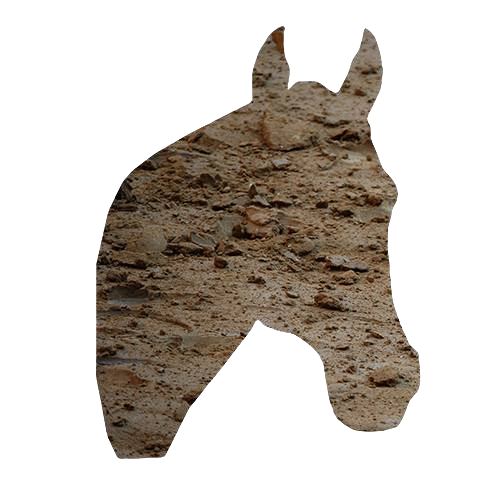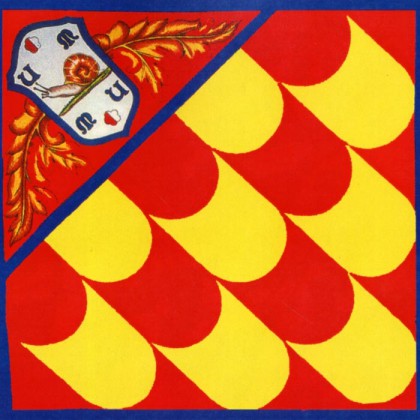www.thepalio.eu - dal Belgio con amore
Chiocciola
Summary
| Colors | Red and yellow with a blue band |
| Symbol | Snail |
| Terzo | Terzo di Città |
| Headquarters | Via San Marco 31 |
| Museum | Cripta della Chiesa di San Pietro e Paolo |
| Clubhouse | Società “San Marco”, via San Marco 77 |
| Contradaioli | Chiocciolini |
| Oratoty | Chiesa dei Santi Pietro e Paolo |
| Paitron Saint | Santi apostoli Pietro e Paolo (29 juni) |
| Enemie(s) | Tartuca (da prima del 1652) |
| Allied contrade | Bruco (dal 1905 al 2002) Istrice (dal 1947) Pantera (dal 1813) Selva (dal 1790) Tartuca (dal 1689 al 1814, dal 1820 al 1840, dal 1866 al 1910) Torre (dal 1989 al 1972) |
| Victories | 51 officially recognized |
| Website | http://www.contradadellachiocciola.it |
Info
Territorium
The Bando di Violante di Baviera from 1730 determined the division of the city of Siena into 17 Contrade. People referred to buildings and their owners instead of the streets (as they do now). The document is still seen today as the basis on which the actual boundaries of the districts were determined.
Today, the following streets are part of the area’s territory:
- via di San Marco
- via delle Sperandie
- via della Diana
- Pian dei Mantellini (part)
- via di San Quirico (part)
- via Tommaso Pendola (part)

The former territory of the extinct Contrada della Quercia is also included in the Chiocciola area. The coat of arms of Quercia is visible in some Chiocciola flags.
Quercia, by the way, was the only district of Siena that had territory outside the gates (Porta San Marco in this case) and walls of the city. More specifically, the Sant’Eugenio Abate monastery was included in the territory of Quercia.
History
In 1466 the residents of “borgo di San Marco” (village of San Marco) donated some buildings in the city to the monastery of San Marta (territory of Chiocciola). In exchange, the nuns were responsible for the restaurant of the San Pietro hospital. Four beds always had to be made available to the poor and a mass had to be dedicated to San Pietro and Santa Marta every week. The Contrada was already in possession of a few houses at the time and had close ties with the church.
In 1482, both Chiocciola and Giraffa built a cart for the Corteo Storico of the “Gioco delle Pugna” with the image of their respective neighborhood. This was the first time in history that two neighborhoods associated themselves with an animal and named their neighborhood after it.
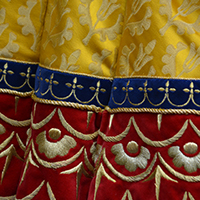
Since the end of the nineteenth, until the end of the twentieth century, there were no agreements about symbols of the neighborhoods. So everyone could design their own flag. Until the end of the Second World War, flags of the neighborhood were extremely rare, partly due to the high costs. Clarity was created on the occasion of the 1957 victory. The district suggested that protettori (protectors, or members) would pay money and in this way be able to “borrow” a flag that could be used at certain times (eg birth, death, victory, etc.). The design of Dino Rofi from 1954 was chosen and is still the image used to this day. (red and yellow scales with a blue border).
Important locations and Festa Titolare
The Oratory of Chiocciola, Chiesa di San Pietro and Paolo was designed by Flaminio del Turco. It has been in use of the neighborhood since 1814.
In front of the Oratory we find the baptismal fountain of the neighborhood. The image (child on the back of a snail) was sculpted by Fulvio Corsini and installed in 1947. On the base it reads: “Quando alla Chiocciola vittoria arriderà / questa fontana buon vino getterà” (if Chiocciola wins, wine will spray from it this fountain).
The Festa Titolare takes place on 29 June (day of the Palio tratta of 2 July) and is in honor of Santi apostoli Pietro e Paolo.
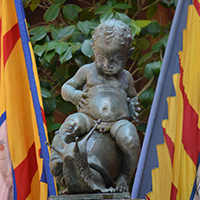
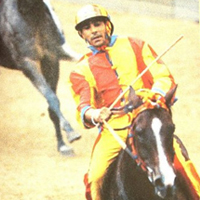
Chiocciola and the Palio
Chiocciola has 51 officially recognized victories. The last one dates from August 16, 1999, with Massimino on Votta Votta.
In the history of the Palio, Chiocciola won 1x a Cappotto, in 1850.
Chiocciola is a contrada who wins a lot. After Oca it is the district with the most wins. They win between 14 and 19 races per century. A constant and high average.
Anecdotes
The name “affogasanti” (saint drowners) dates from the late 19th century and brings to mind a particularly sad period for the colors of San Marco.
After the victory in July 1888, a fairly long period of no longer began to win. Something they were not used to at Chiocciola in that period (with 12 wins in 38 years!). During the Palio of July 2, 1896, Chiocciola seemed to win. During the entire race, Chiocciola was in the lead, only to be passed by Torre with debutant Scansino after the last Casato. Many contradaioli ascribed the loss to an error by the captain who had chosen a false fantino with Cecco. One chiocciolino, on the other hand, was looking for another scapegoat and furiously went into the stable. There he broke loose the image of San Antonio (patron saint of animals) and threw it into a well in his attack of anger. A huge mistake because San Antonio of Padua was also the protector of Tartuca, also enemy of Chiocciola at that time.
Chiocciola also continued to lose sensationally in the following years. In 1897 an exciting race was settled between Chiocciola, Istrice, Leocorno and Giraffa. Istrice, with the strongest horse in the lead, fell and stopped Leocorno in his fall. Chiocciola took the lead and seemed to be heading for a win. One meter before the finish line, it was Scansino again, this time for Giraffa, who pulled the longest.
The same protagonists in August: Chiocciola, back with fantino Mugnaino and Giraffa who this time chose Massimino. Giraffa won again (a cappotto) and Chiocciola was second again (third race in a row!). For Mugnaino this meant the end of his career.
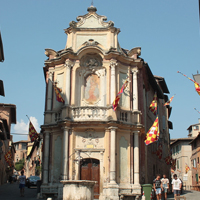
The bad luck continued into the new century. Silently some contradaioli began to think of the curse of Saint Anthony, drowned in the well. At the Palio of July 1901, the victory finally appeared. After two laps, Chiocciola had a more than safe lead. Suddenly Emilio Lazzeri detto Fiammifero stopped. He jumped off his horse, and left the victory to Nicchio. Ironically, it was Scansino who won again. He became the “black beast” of Chiocciola. In 1902 and 1910 Scansino won twice for Tartuca! The curse of San Antonio did not seem to end. In October 1910, the women of the neighborhood were fed up. They drained the well and brought the image back up. The statue, which had clearly abandoned all those years under water, was restored and given a beautiful place in the church of the neighborhood. The first opportunity to test the forgiveness of San Antonio came on July 2, 1911. Chiocciola took the lead and led the entire course. Suddenly a Tartucino released a dog in the hope of destabilizing the horse of Chiocciola and thus keeping the victory. The plan failed, and Chiocciola won!
Since then “affogasanti” has been nicknamed the chiocciolini and since June 29, 1972 is also the title of the official magazine of the Contrada.
The rivalry with Tartuca
The rivalry between Chiocciola and Tartuca is one of the oldest and most deeply rooted in Siena. Moments of enmity alternated moments of friendship and self-alliance. Since 1910, and a victory for Tartuca, we are once again in a period of enmity.
Victories
1
03/07/1661
Pavolino
Leprino di Buonconvento
2
02/07/1668
Bacchino
?
3
02/07/1690
Pier Maria
?
4
02/07/1695
Pulcino
Baietto
5
16/08/1701
Giuseppone
morello
6
02/07/1708
Ignudo
stornello di Siena
7
02/07/1710
Ignudo
leardo castrone
8
03/06/1712
Strega
Baio di Siena
9
02/07/1713
Ruglia
castrone
10
17/08/1718
Morino
?
11
16/08/1719
Morino
Freghino
12
02/07/1722
Cappellaro
Moschino
13
17/08/1733
Pettinaio
leardo moscato di Corniolini
14
16/08/1743
Cerrino
morello del Baldassarrini
15
02/07/1752
Il Lasca
sauro dorato del Chiti
16
17/08/1753
Alisè
?
17
02/07/1767
Bastiancino
baio scuro del Mancini
18
16/08/1768
Nacche
falbo del Felloni
19
16/08/1770
Castagnino
morello del Fontanelli
20
02/07/1771
Bastiancino
sauro dorato del Vegni
21
17/08/1772
Bastiancino
stornello corvo
22
02/07/1788
Biggeri
baio sfacciato di fronte
23
16/08/1798
Ciocio
morello del Ceccarelli
24
02/07/1822
Brandino
morello maltinto del Meini
25
02/07/1823
Gobbo Saragiolo
baio scuro del Pagliai
26
02/07/1850
Folaghino
baio del Bernardini
27
16/08/1850
Folaghino
morello del Cianchelli
28
16/08/1853
Paolaccino
baio scuro del Bandini
29
02/07/1855
Paolaccino
baio brusciato del Franci
30
02/07/1857
Paolaccino
baio balzano stellino
31
16/08/1858
Paolaccino
baio balzano stellino
32
03/07/1864
Bachicche
morello del Grandi
33
04/07/1869
Marzialetto
baio dell’Amaddi
34
17/08/1873
Girocche
storno del Pisani
35
03/07/1882
Bachicche
Prete
36
02/07/1885
Bachicche
morello balzano del Venturini
37
02/07/1888
Tabarre
Gemma
38
02/07/1911
Nappa
Stella
39
16/08/1924
Picino
Giacca
40
16/08/1925
Cispa
Fiorello
41
16/08/1926
Cispa
Margiacchina
42
16/08/1938
Tripolino
Sansano
43
02/07/1949
Bazza
Lirio
44
02/07/1957
Vittorino
Tanaquila
45
16/08/1964
Peppinello
Danubio della Crucca
46
17/08/1966
Canapetta
Beatrice
47
02/07/1968
Canapetta
Selvaggia
48
17/08/1975
Aceto
Panezio
49
02/07/1976
Valente
Quebel
50
16/08/1982
Bazzino
Panezio
51
16/08/1999
Massimino
Votta Votta
Chiocciola attributes himself to three additional victories. However, these are not recognized by the City:
- 2 luglio 1654: there are no reports that testify to the existence of this Palio
- 21 settembre 1679: bufalata in Villa Cetinale won by fantino Flavio Chigi.
- 28 settembre 1856: Palio ridden in Florence.
Images
Drappelloni and Numeri Unici
Drappellone and Numeri Unici can be found on pages on our Dutch website (pages will open in new tab) :
Debuting fantini
- Since July 2, 1775, 483 fantini debuted on the Piazza
- In 1928, no less than 9 fantini debuted (in 3 courses).
- 21 fantini won their debut.
- Chiocciola had 28 fantini debuting since 1775
- Gobbo Saragiolo won at his debut
- The longest period without a debutant is 27 years : 2/7/1923-16/8/1958
| 1 | Piaccina | 16/8/1787 |
| 2 | Figlio di Niccodemo | 3/7/1794 |
| 3 | Botto | 16/8/1796 |
| 4 | Baggiani Mugnaio | 2/7/1802 |
| 5 | Tonfo | 14/5/1809 |
| 6 | Gobbo Saragiolo | 2/7/1823 |
| 7 | Barege | 2/7/1832 |
| 8 | Saltatore | 3/7/1842 |
| 9 | Bigonzo | 16/8/1843 |
| 10 | Broccolo | 2/7/1846 |
| 11 | Piccolo Campanino | 15/8/1848 |
| 12 | Stambini Luigi | 17/8/1851 |
| 13 | Gano Di Catera | 3/7/1853 |
| 14 | Stoccolungo | 16/8/1861 |
| 15 | Il Matto | 2/7/1867 |
| 16 | Gonga | 2/7/1874 |
| 17 | Filusella | 2/7/1878 |
| 18 | Chiccone | 2/7/1900 |
| 19 | Porcino | 2/7/1923 |
| 20 | Musingo | 16/8/1958 |
| 21 | Canapino II | 2/7/1960 |
| 22 | Capretto | 2/7/1969 |
| 23 | Tremoto | 3/7/1978 |
| 24 | Faenza | 17/8/1980 |
| 25 | Pistillo | 16/8/1993 |
| 26 | Andrea | 2/7/1996 |
| 27 | Lo Zedde | 16/8/2005 |
| 28 | Nappa II | 16/8/2011 |
Never happened
Below you will find events that have never happened before and that cause some kind of superstition in the contradaioli. MAI or never is of course a relative term. The further we go back in time, the less data is stored and the more uncertain we become.
Chiocciola has never :
- won a palio in the 21st centurty
- won ridding together with Drago and Lupa, Lupa and Onda, Lupa and Selva
- won when they were selected as 2nd or 8th (estrazione)
- won from position 4 of 9 at the start
- won when they were at the start next to Aquila or Istrice or Oca or Onda
- won a palio when extracted together with Aquila or Civetta or Drago or Istrice or Leocorno or Lupa or Nicchio or Onda or Selva or Tartuca or Torre or Valdimontone
- won a palio in july after they were drawn
- drawn together with Nicchio in july
- won a palio alla romana
- won a palio with cavalli scossi
- won a palio when Tartuca was the rincorsa
Last update : 18 november 2019
